Field Methods 2014: Put Your Hiney in the Piney
When many of my academic colleagues (both at W&M and further afield) learn that I write a blog it is commonly followed by an amused grin and a question along the line of “why besmirch yourself with a blog?”
In the academy, peer-reviewed publications, primarily in academic journals and books, are the coin of the realm. Yet research publications generally reach only an audience of specialists. One of the goals in writing this blog is to project the geologic research that we do here at William & Mary more broadly and in a form that is, hopefully, more digestible for public consumption.
I also write this blog to offer a view of the academic enterprise that William & Mary students experience in the Geology Department. Dynamic courses and fabulous professors abound at William & Mary, but these classroom experiences commonly occur behind closed doors – unseen to all but the professor and students. By putting my academic courses front and center in blog posts I’m aiming to shed light on interactive learning that takes place – both in and outside of the classroom.
One of my courses this semester is Geology 311: Field Methods in the Earth Sciences (pdf); it’s a class in which students are learning to do geology in the field while conducting research focused on understanding the geology and landscape at three locations in Virginia.
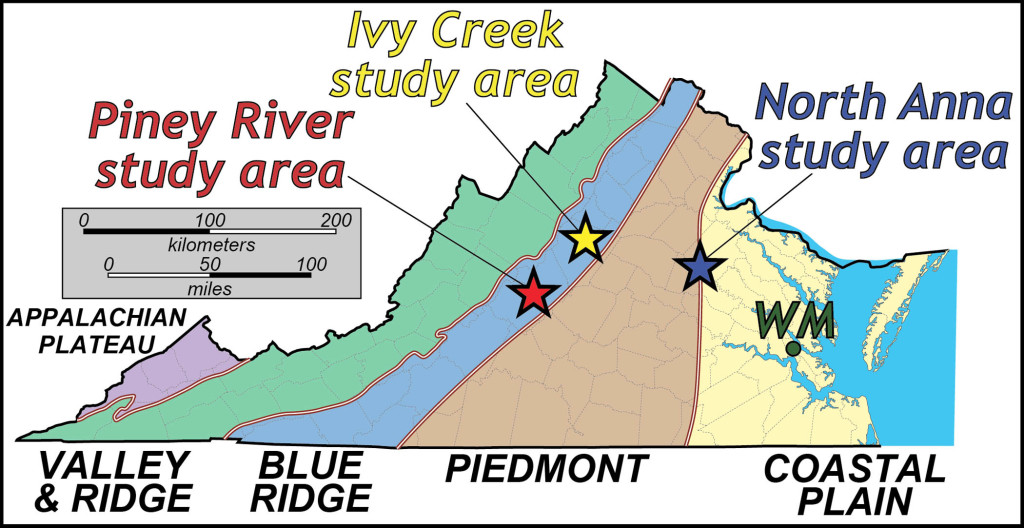
Geologic overview map of Virginia with study areas for the 2014 William & Mary Geology Field Methods course.
These are not canned exercises, taught year-in and year-out, where the geology is already known. Rather our study areas are all sites where the geology is poorly understood, and with each field excursion we are making new discoveries. The field sites occur in Virginia’s Coastal Plain, Piedmont, and Blue Ridge geologic provinces and are a distance from campus, so most Fridays we (all 18 of us) load into vans and head west.
Last weekend we started our field research in the Blue Ridge foothills along the Piney River. Our objectives for the weekend were to accurately describe and map the bedrock along the Blue Ridge Railway Trail, a publicly accessible greenway along the Piney and Tye rivers. We camped at Ann and Jerry Samford’s (W&M Geology, class of 1977) farm at the confluence of the Piney and Tye rivers. The autumn weather was as perfect as it gets, and the Samfords’ hospitality made it a special trip.
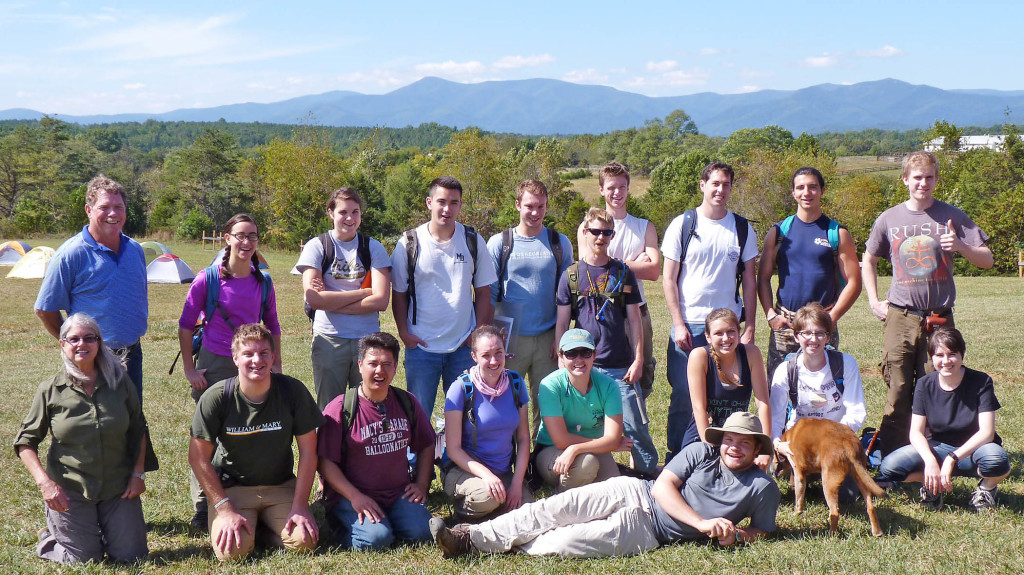
The 2014 Field Methods class in front of a Blue Ridge backdrop. Our hosts Ann and Jerry Samford (W&M Geology, class of 1977) anchoring the right flank (left side of photo).
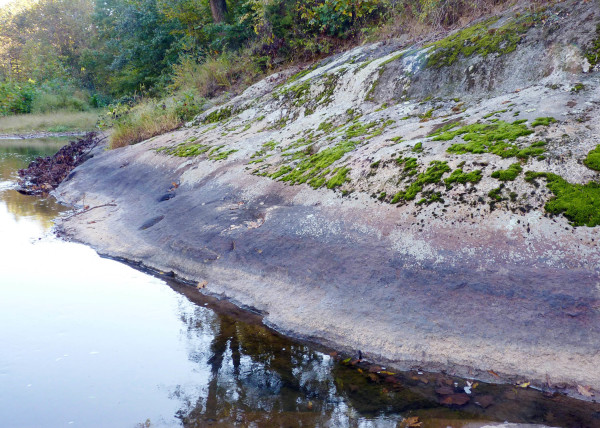
Bedrock along the Piney River (note the sediment and mineral coatings on the bedrock as well as moss above the low flow conditions in late September).
We had to ford the Piney and Tye rivers to reach the Blue Ridge Railway Trail, fortunately for us the rivers were at low water (with a meager ~10 cubic feet of water per second gurgling by) and the crossings were made easy.
These are bedrock rivers and even during low-flow conditions there are deep pools which, after a long day of field work, were inviting spots to put one’s hiney (also spelled: heiney, heinie; synonyms: buttocks, behind, posterior, etc.) in the Piney. Some of the Field Methods crew took full advantage – not every W&M course affords such opportunities!
We’ll return to the Piney River in November to complete our fieldwork, and by the semester’s end I’ll report on the findings from all three sites. For me the exciting part of this course is that as the 2014 Field Methods class learns to do geology in the field, they are also garnering new and significant data that will make for a better understanding of Virginia’s rich geologic history.

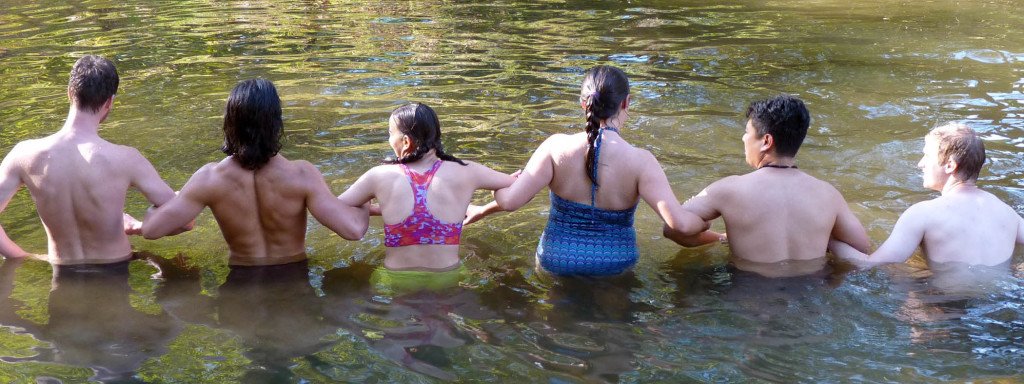

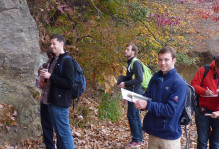
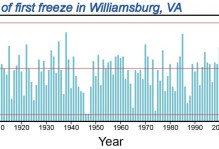
No comments.
Comments are currently closed. Comments are closed on all posts older than one year, and for those in our archive.